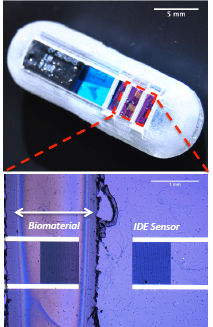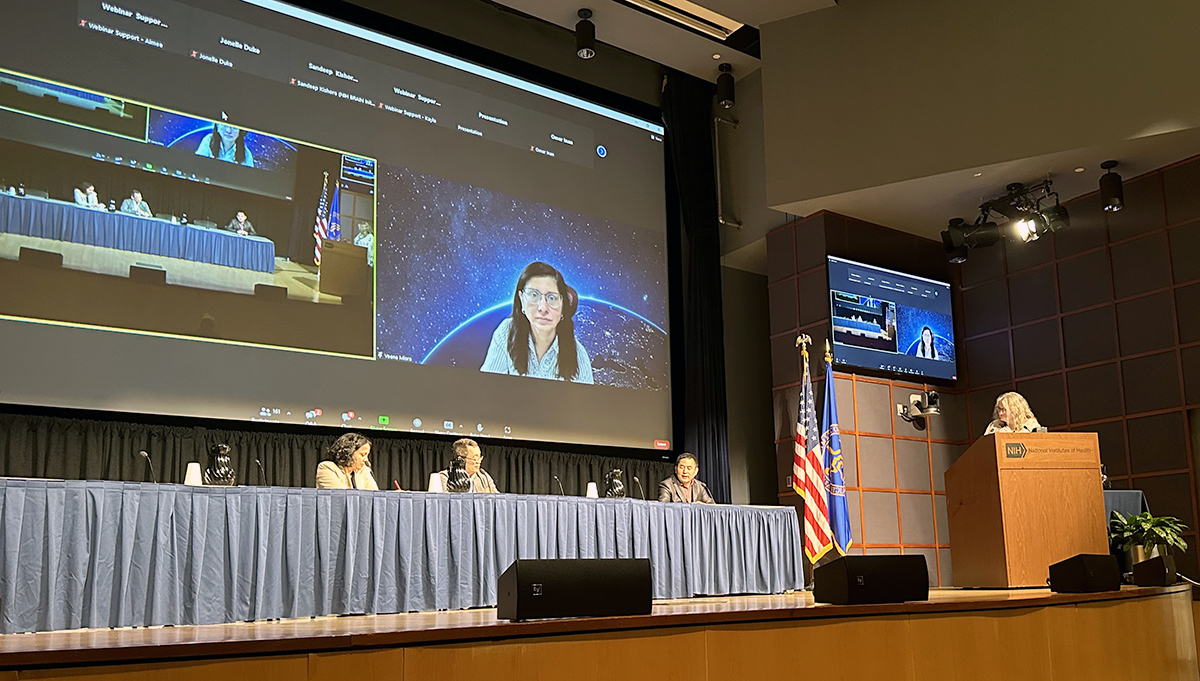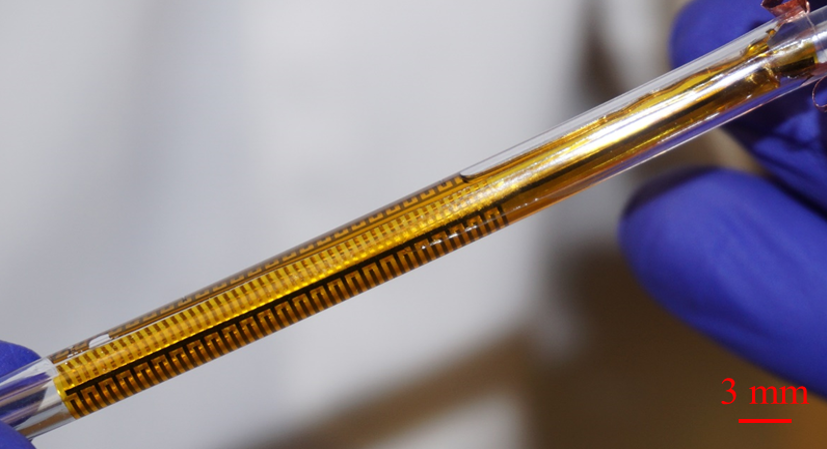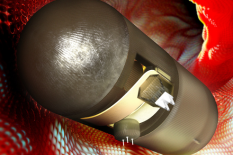News Story
Ghodssi, Bentley receive NSF EAGER grant to develop ingestible capsules for medical diagnosis

Concept illustration of an ingestible microsystem capsule for for real-time GI-tract diagnostics. CREDIT: UMD MEMS Sensors and Actuators Lab
ISR Director Reza Ghodssi (ECE/ISR) is the principal investigator and William Bentley (BioE) is the co-PI for a two-year, $150K National Science Foundation Early Concept Grants for Exploratory Research (EAGER) grant, "Gut-Nav: A Gut Navigator for Real-Time Diagnostic Reporting on Gastro-Intestinal Health."
The device in development was one of the main topics of Ghodssi's Distinguished Scholar-Teacher lecture in 2015 and is a current major theme in his research group. Ghodssi and Bentley will be working with colleagues in the neuroscience field during this project.
Abstract
Biomedical applications have become a central drive for current investigations of micro- and nano-technologies. There is vast potential in improving diagnostic tools through implantable and ingestible devices, and they are being adapted for interfacing physiology and electronics towards automated and robust systems. The primary benefit these systems aim to fulfill is improvement upon any limitations in current medical processes. One of these limitations is difficulty in accessing physiological information that requires tools that are costly, invasive, complex, or a combination of these features. The Pill-cam, for example, was designed as an alternative to current standards in gastrointestinal (GI) visualization and detection, i.e. endoscopies or colonoscopies, that removes processes such as bowel preparation or sedation. Some GI abnormalities, however, manifest in the form of chemical and biomolecular changes, which require extraction for laboratory analysis; this extraction can be cumbersome, the samples can degrade before analysis, and rarely provide location specific information for aiding in the differential diagnosis.
This research will demonstrate a new generation of ingestible capsules for region-targeted in situ detection of GI analytes. Two medical applications we are specifically targeting are 1) pancreatic adenocarcinoma (PA) screening and 2) inflammatory bowel disease (IBD). Materials such as derivatives or co-polymerizations of poly(methyl-methacrylate) are used as coatings for various pharmaceuticals that are directed to dissolve in target pH-specific locations in the GI tract, and the pancreas secretes a bicarbonate solution for neutralizing stomach acids that is helpful in identifying the region of secretion.
Further, enzyme activity and other molecular markers available in these bicarbonate secretions, offering the potential for transforming approaches to PA screening (Tian, 2008; Wang, 2014). IDB, on the other hand, can be classified as either Crohn’s disease or ulcerative colitis, both of which require repeated endoscopic surveillance negatively affecting a patient’s quality of life. Common inflammatory markers such as lactoferrin are sensing targets that can aid, if detected, in location mapping for improved IBD management (Sipponen, 2008).
Our strategy involves impedance and capacitive sensing of material degradation or marker probe functionalization over electrodes in response to analyte exposure and specific reactivity. These electrical signals will be read and transmitted via a network of components, including an analog-to-digital converter, a Bluetooth low-energy chip, a low power timer integrated circuit, and a lithium polymer batter. The packaging consists of a 3D-printed biocompatible capsule, with micromesh structures for retaining polymers that will dissolve at a previously-determined pH, thereby allowing for GI location targeting.
The research will involve a series of experiments which will build upon preliminary results we have recently developed. Several questions to be addressed include:
(1) Can we sense these markers at relevant physiological concentrations with appropriate specificity?
(2) What is the optimal packaging strategy for sampling pH-specific GI secretions?
(3) What are the minimum electronic components necessary to collect and wirelessly transmit this information to an external receiver?
A powerful tool will be created leading to further knowledge in biodegradation of polymer coatings, systems integration, packaging and biomarker detection. Capsule technologies do exist, but no swallowable technology is currently available that allows for sensing of specific biomolecular analytes within targeted regions within the gut. The developed system could serve as a platform for a variety of other sensing applications and could inform the development of smaller ingestible or implantable systems for use in other systems within the body.
Published June 5, 2017









